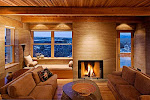DIFFRACTION
A beam of light passing through a circular aperture spreads out a little, a phenomenon known as diffraction. Diffraction is a physical phenomena which is inescapable. The smaller the aperture, the more the spreading. For photographic lenses, diffraction depends only on the f-number. Strictly speaking, diffraction is a function of aperture size or the physical size of the hole and that is how it would be defined in a physics textbook. Which means that the larger area aperture in a 300mm lens at f/16 (as compared to a 50mm lens at f/16) should provide lower diffraction. However, diffraction patterns are angular patterns and as such are dependent on how far from the aperture you place the screen used to view it also. In photography, the aperture is at the optical center of the lens and the screen is (for infinity focus) one focal length away. The physical size of the diffraction blur is then the focal length divided by the apparent size of the aperture i.e., the definition of the f stop. Thus, in photography, diffraction is only a function of f stop and not a function of the focal length. In simpler terms, the larger aperture of the 300mm lens does offer lesser diffraction at the diaphragm (i.e., less bending around the diaphragm) but since the light now has a longer distance to travel (as compared to the 50mm lens), the smaller bending still results in a fair bit of blur at the viewing screen. N Dhananjay
On digital cameras it is a little more complex, because you have to factor in weird things like pixel pitch. If you are a techy read this. If you do their calculations on my lens/camera example above, you see that at f11 I am not diffraction limited but at f13 it is just starting-which confirms my field tests. Otherwise if you are just a shooter like me just do the simple testing I suggested and pick your optimum aperture for the lenses and scenes you like to photograph. Remember my POV. To make a DSLR do first class professional AP. You must maximize at every step the quality of the image. In this case that means getting the smallest aperture possible without inducing too much diffraction.
Ian raised an interesting point:
Hi Kirk. Firstly, thanks for taking the time to write this blog. I appreciate the effort in communicating your insights, techniques and link sharing. In response to this post, is there a possible part 2 in which you share how using a t/s, angled down 8 degrees, helps give the illusion of greater depth of field? I'm guessing on the degrees, as I do not as yet own a t/s. Could a statement be made such as, 'if you're stuck at f/13 due to diffraction but angle your t/s by this amount, it'll look like you're at f/22' or some such thing?
Thank you sir,
Ian.
Excellent point Ian. It raises the issue of tilts which can effectively give an image an exaggerated DoF. Frankly I don't use much tilt on architecture (I use it allot on landscape), because I work fast and tilts can get you into allot of trouble. Basically tilts change the plane of focus from parallel to the wall or building to a plane slanted (if you tilt forward) from the foreground to the top of the background. This leaves the bottom of buildings potentially waaaaaay out of focus and your DoF may not pull it back into focus. So use tilt verrry sparingly like no more than 1/8 to 3/16 of an inch forward tilt and refocus on the foreground a bit away from camera position and the building a bit below the top and look CLOSELY at the bottom of the building and see if it is way to far out of focus-use your Live View focusing magnifier to take a good look and see if you are in the ballpark. You may need more or less tilt. Remember to keep the building straight-you still keep the camera level as you tilt the lens forward. I strongly suggest practicing this some and looking at the files blown up on your monitor to really see what is OK in terms of tilt and aperture and DoF.













I'm doing fine and you?
ReplyDeleteCool. Thanks :)
ReplyDelete